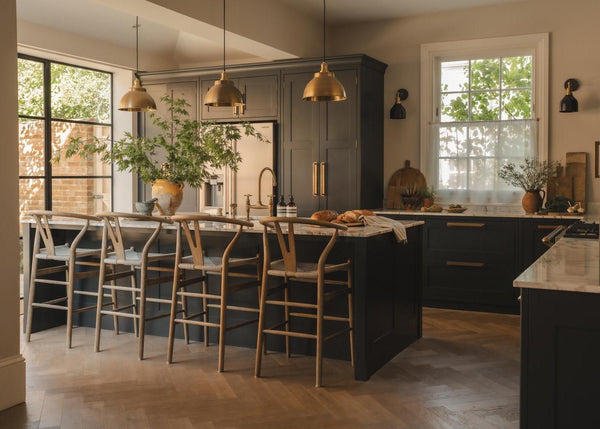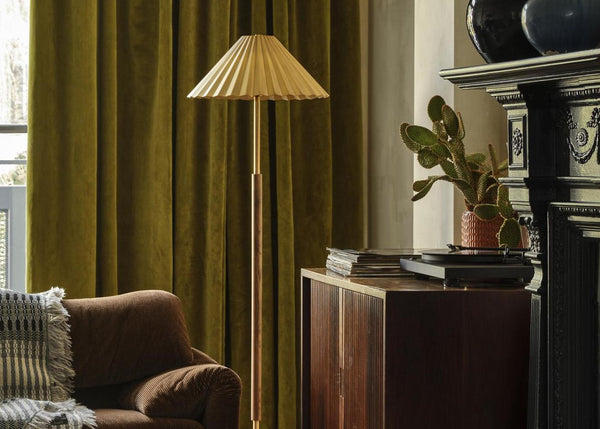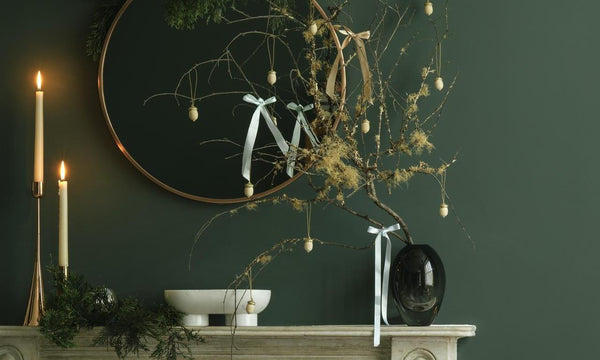
The Seasonal Dance of Light
We always say, light has a powerful influence on how we feel, move, and connect with the spaces around us. It affects everything from our energy levels to our sleep patterns, our sense of time to our overall wellbeing. But lighting is not just about comfort and clarity. It’s also about capturing the feeling of a moment, the atmosphere of a season, and the quiet joy of living well throughout the year.
As daylight shifts with the seasons, your interior lighting should be able to shift with it. That doesn’t mean reinventing your scheme four times a year. It means creating a thoughtful, flexible setup that can respond to subtle changes in tone, temperature and mood. The aim is to design a year-round lighting scheme that’s functional, beautiful, and alive to the rhythm of the seasons.

This guide explores how to do exactly that. From the brightness of spring mornings to the stillness of winter nights, these tips will help you style your lighting to support wellness, creativity and the small pleasures of everyday life.
Quick Tip: A layered, flexible lighting setup with dimmers, tonal variation and a mix of light sources means you can dial up the brightness in spring, soften it in summer, add warmth in autumn, and create cosiness in winter, all without rewiring your room.

Spring: Lightness, Clarity and Starting Fresh
Spring brings longer days, softer mornings and a renewed desire to feel productive and refreshed. This is the time of year when natural light starts to flow more freely through windows, and your lighting can help extend that feeling throughout the space.
Use neutral white bulbs to create a clean, energising light without harsh glare. If your home benefits from good natural daylight, translucent shades or ribbed glass fittings can help reflect and diffuse that light gently. Where daylight is limited, place task lighting near reflective surfaces to maximise what’s available.
This is also a good time to switch focus onto secondary spaces. Style up a forgotten reading corner with a soft-glow wall light, or place a sculptural table lamp on a sideboard to reintroduce rhythm and focus. Spring interiors feel light and calm, and your lighting should echo that with clarity and intention.
Spring lighting tips:
- Let daylight lead the way: Use sheer or ribbed glass shades to make the most of natural light, softening shadows and diffusing brightness with ease.
- Refresh with clean tones: Swap to neutral white bulbs for a crisper, more energising feel that helps reset the mood of a space after winter.
-
Style forgotten corners: Reinvigorate sideboards, shelves or alcoves with sculptural lights that reintroduce rhythm, focus and a sense of renewal.

Summer: Long Days, Soft Nights and Easy Evenings
In summer, light takes over the day. Even indoors, there is often no need for much artificial light until evening. The focus shifts to creating ambience, softness and sociability once the sun goes down.
Swap out intense lighting for shaded or directional pieces that cast a mellow glow. Dimmable table lamps are ideal for summer evenings, especially those with warm white bulbs that create a sense of ease without overpowering the space.
Summer is about enjoying the moment. Use lighting to enhance dining areas, reading spots or lounging corners that get used into the evening. Try switching off your ceiling lights and relying on a trio of lamps to shape a more relaxed and flattering atmosphere.
Summer lighting tips:
- Dim the drama: Opt for shaded or directional lights with dimmers to create a gentle ambience that doesn’t compete with long daylight hours.
- Create social zones: Use lamps to spotlight evening rituals—whether that’s alfresco-style dining indoors or a quiet reading chair that catches the last of the light.
-
Switch off the overheads: Rely on a trio of lamps to bring a flattering, low-slung glow once the sun sets, keeping the space feeling easy and open.
Read Our Garden Lighting Guide

Autumn: Golden Tones, Texture and Transition
As days begin to shorten, lighting once again takes a central role in the feeling of a space. Autumn is a transitional moment, and your interiors should evolve with it, becoming warmer, more grounded, and full of tone and texture.
Switch to warm white or amber bulbs to mirror the changing light outside. Choose lighting pieces in rich, tactile materials like travertine, linen, aged brass or smoked glass. These not only diffuse light beautifully but also add depth and interest.
This is the season to embrace layering. A single pendant won’t bring the atmosphere you want on darker evenings. Combine wall lights with table or floor lamps to create a balanced scheme that feels intuitive as the light outside fades.
Autumn lighting tips:
- Warm the tone: Replace bright white bulbs with warm or amber tones to echo the golden shift outside and support a slower pace.
- Add tactile interest: Choose materials like linen, travertine or aged brass that add visual softness and help diffuse light more naturally.
-
Layer with purpose: Combine pendants, wall lights and lamps to create a multidimensional scheme that adapts to shorter days and changing routines.

Winter: Stillness, Comfort and Moments of Glow
In winter, lighting is about comfort. When daylight is scarce and evenings stretch long, your interior lighting becomes the foundation for mood and function. It’s what sets the tone for mornings, work-from-home focus, winding down, and everything in between.
Layered lighting is essential. Use a mix of ambient lighting like ceiling or pendant fixtures, task lighting near desks or kitchen counters, and low accent lights in living spaces. Choose warmer colour temperatures to bring softness and warmth to rooms that might otherwise feel flat or cold.
Lampscaping: the art of styling with multiple lamps is especially useful in winter. Position them at different heights to create soft pools of light, define cosy zones and draw attention to comforting materials like velvet, wood or wool.
Winter lighting tips:
- Think in layers: Balance ceiling lights with task and accent lighting to shape a comforting, flexible setup that works from dawn to dusk.
- Dial up the warmth: Use bulbs with warmer colour temperatures to soften harsh edges and make rooms feel more inviting.
- Embrace lampscaping: Cluster lamps at varying heights to form pools of light that define space, encourage rest and spotlight soft textures.

Conclusion: A Year-Round Lighting Scheme That Works With You
The key to great lighting is not reinvention, it’s adaptability. A well-layered interior lighting scheme gives you the tools to respond to changing light, mood and energy levels without needing to start from scratch every few months.
Use ambient, task and accent lighting together to create a flexible base. Add dimmers to key fixtures so you can fine-tune intensity. Choose bulbs that offer a range of colour temperatures to reflect the season’s tone. And above all, let your lighting speak to how you want to feel in your space refreshed, focused, social, or soothed.
Because good lighting doesn’t just help you see. It helps you live.
Shop Lighting


